#chestfat
Explore tagged Tumblr posts
Text
How to Reduce Chest Fat?
To effectively remove chest fat, a combination of dietary changes, exercise, and lifestyle modifications is essential. This guide will explore the strategies that can help both men and women reduce chest fat, focusing on a holistic approach that promotes overall fat loss and muscle toning.
Chest fat can be particularly stubborn and is often influenced by various factors, including genetics, hormonal changes, and overall body fat percentage. In men, excess chest fat may manifest as "man boobs," a condition medically known as gynecomastia, which can be caused by hormonal imbalances, obesity, or certain medications. For women, chest fat can be linked to overall body fat and hormonal fluctuations, particularly during different life stages such as puberty, pregnancy, or menopause.
The Importance of a Caloric Deficit
The fundamental principle of losing fat, including chest fat, is to create a caloric deficit, meaning you burn more calories than you consume. This can be achieved through a combination of dietary adjustments and increased physical activity.
1. Calculate Your Daily Caloric Needs: Start by determining your Basal Metabolic Rate (BMR) and total daily energy expenditure (TDEE). This will help you understand how many calories you need to maintain your current weight and how many you should consume to lose weight.
2. Aim for a Moderate Caloric Deficit: A deficit of 500 to 800 calories per day is generally recommended, which can lead to a safe weight loss of about 1 to 2 pounds per week. This gradual approach is more sustainable and healthier than drastic dieting.
Dietary Changes
Adopting a balanced diet is crucial for fat loss. Here are some dietary strategies to help reduce chest fat:
Prioritise Whole Foods: Focus on whole, unprocessed foods such as fruits, vegetables, lean proteins, and whole grains. These foods are nutrient-dense and can help you feel full while consuming fewer calories.
Limit Sugars and Refined Carbs: Reduce your intake of sugary foods and drinks, as well as refined carbohydrates, which can lead to weight gain and increased fat storage.
Monitor Portion Sizes: Be mindful of portion sizes to avoid overeating. Using smaller plates and serving sizes can help control calorie intake.
Stay Hydrated: Drinking plenty of water can aid in weight loss by promoting satiety and reducing calorie intake.
Exercise Regimen
Incorporating both cardiovascular and strength training exercises is essential for losing chest fat and toning the chest area.
Cardiovascular Exercise
Regular cardio is effective for burning calories and promoting overall fat loss. Aim for at least 150 minutes of moderate-intensity cardio per week, which can include:
- Running or jogging
- Cycling
- Swimming
- High-Intensity Interval Training (HIIT)
- Jump rope or stair climbing
Strength Training
Building muscle in the chest area can help tone the muscles and improve the overall appearance of the chest. Effective exercises include:
Push-ups: A classic exercise that targets the chest, shoulders, and triceps. Variations like wide-grip push-ups can further engage the chest muscles.
Bench Press: Using a barbell or dumbbells, this exercise effectively targets the pectoral muscles.
Chest Fly: Performed with dumbbells, this exercise helps to isolate and strengthen the chest muscles.
Dips: Utilising parallel bars or sturdy chairs, dips can effectively work the chest and triceps.
Sample Weekly Workout Plan
Monday: 30 minutes of running + Push-ups (3 sets of 10-15 reps)
Tuesday: Strength training (Bench press and Chest fly, 3 sets of 10-12 reps each)
Wednesday: 30 minutes of cycling + Dips (3 sets of 8-12 reps)
Thursday: HIIT workout (20-30 minutes)
Friday: Rest or light activity (walking, yoga)
Saturday: 30 minutes of swimming + Strength training (focus on upper body)
Sunday: Rest or light activity
Lifestyle Modifications
In addition to diet and exercise, consider the following lifestyle changes to support fat loss:
Get Enough Sleep: Aim for 7-9 hours of quality sleep per night, as inadequate sleep can disrupt hormones related to hunger and fat storage.
Manage Stress: High stress levels can lead to weight gain, particularly in the abdominal and chest areas. Incorporate stress-reducing activities such as meditation, yoga, or deep-breathing exercises.
Track Your Progress: Keeping a food journal or using a fitness app can help you stay accountable and monitor your caloric intake and exercise routines.
Medical Considerations
If you find that diet and exercise are not yielding the desired results, or if you suspect that hormonal imbalances are contributing to chest fat, consult a healthcare professional. They can provide guidance tailored to your specific situation, including potential medical interventions if necessary.

Ancient “Mountain Tea” activates 24/7 fat-burning
Conclusion
Removing chest fat requires a multifaceted approach that combines a caloric deficit, healthy eating, regular exercise, and lifestyle modifications. By understanding the factors contributing to chest fat and implementing these strategies, you can achieve a healthier body composition and improve your overall well-being. Patience and consistency are key, as sustainable fat loss takes time and dedication.
0 notes
Link
#chestfat#gynecomastia#HowcanIlosemymoobsfast?#Howdoyoureducemalebreasts?#ManBoobs#Moobs#MaleBreasts#Menshealth
0 notes
Note
wahwahwah where did u go >_<
I'm sorry!!!!! I kinda got really distracted and fell out of using this blog for, like, a month. Or two. I forget how long its been, all these asks I'm answering now are AGES old! Thats the unfortunate thing about being on anon, now I'm never gonna know if all the cute dorks that sent me these precious asks are gonna end up seeing their responses before they inevitably end up deleting their blogs out of embarassment and regret for showing off their heaving chestfat...
7 notes
·
View notes
Text
Best way to reduce Belly fat, Chest fat and Love Handles for men
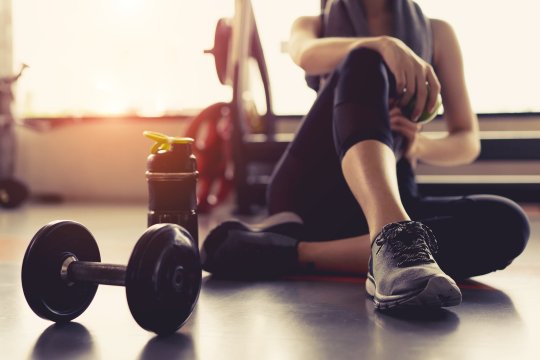
Not everyone will store fat in some places if you are a man your main problem areas are around Lower belly fat, Chest fat and Love handles. You find everything you're looking for in this article. Whenever I've fallen off the wagon, the stomach cushions or Love Handles were the main detect that I would see muscle to fat ratio beginning to collect. And this is definitely not just a problem for me, many men find that their love handles are not only one of the first spots to gain fat, but they're also one of the toughest areas to reduce fat from, especially since there is no way to spot reduce that area with certain exercises. A lot of people will tell you that you can just crunch or hyperextend that lower back fat away, but there's definitely no chance that that's going to work on its own. Today I want to go over 8 things you can do within the realm of diet, weight training, and cardio that will work. 1. Reduce Refined Carbs & Sugar
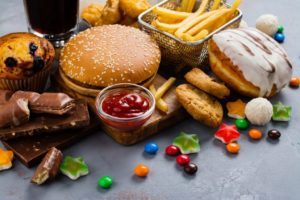
your first step with diet should be to reduce refined carbohydrates and sugar. But we don't want to just impose a ton of restrictions. Since the lower belly and love handles tend to be the last spots to go we want to be on a diet that we can actually stick to. Because before your body starts burning those love handles it's going to burn the fat from your face, your hands, your arms, and your legs first. So you don't only want to do what most people do and simply focus on reducing your calories, cutting carbs really low, restricting yourself, and battling cravings all day and night long because that's a losing battle. Instead, you want to optimize hormones like insulin, glucagon, testosterone, ghrelin, leptin, and growth hormone because all of them play an extremely important role in the fat loss process especially when we get down to the stubborn problem areas, that doesn't seem to want to budge. Controlling Insulin with your diet should be your first priority because insulin is like an on and off switch that controls whether you will be burning fat or storing fat. According to research having high insulin levels can also cause your body to preferentially store fat around your belly and love handles. Every time when you eat Insulin level high but especially high when you eat high in carbohydrate and sugar this is the way the first step is to reduce refined Carbs & Sugar from your diet. Refined Carbs include white bread, pizza dough, pasta, pastries, white flour, white rice, soda, and sweet desserts. So try to avoid these things from your diet. 2. Add More Sources of Protein
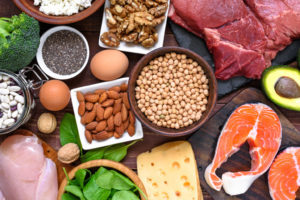
Having Diet on higher-level protein helps you to lower the Ghrelin level. When a Ghrelin level is high you are consistently getting signals that you are hungry and for that, you need to eat. So you definitely want to eat more protein throughout the day to lower Ghrelin. Adjusting your Diet that 30% of your daily calories coming from Protein not only fell you full also helps to speed up your metabolism and increases fat oxidation this is because of the fact that protein required more energy to digest than other macronutrients. 3. Increase Healthy Fat eliminate Unhealthy source of Fat
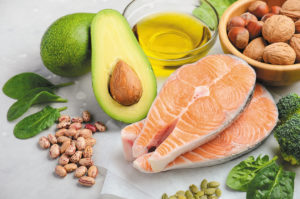
Things like Avocado, Walnut, and Salmon can all help you stick to your new plan. Foods high in monounsaturated fats and polyunsaturated fats will help in low digestion in the small intestine increasing fullness and decreasing your appetite. You need to keep in mind that many high-fat foods really taste good but are dense in calories. Eating high calories will prevent fat loss. Keep in mind before sky rocketing fat in your diet is that some people do better on high fat diet mean while some people completely do not. The people who have better respnse to high fat diet and stay lean are considered as having high fat phenotypes mean while others gain weight on high fat diet considered as having low fat phenotypes. So before adding high-fat food to your diet check which is your body type. 4. Incorporate Unrefined Sources of Carbohydrates High in Fiber

High fiber carbohydrates such as Oats, Sweet Potatoes, Banana and Orange will help to regulate Ghrelin levels (which will helps you to manage your hunger). Many people avoid carbohydrates entirely when they try to lose fat but the truth is that almost all carbohydrates in the natural form always contain fibers. In fact, one of the main things that happen when food goes from unprocessed to process fiber will get removed. This is unfortunate because of the higher fiber diet can help to decrease insulin levels and burn fat. Now has long as you keep your protien intake somewhere around 30% you can divide up your split whole unprocessed carbohydrate and healthy fats in a way that works better for you. Both Higher fat and Higher Carbohydrates can work for reducing the size of your Love Handles. You can either choose any one or balance both. 5.Limit Alcohol Consumption

You don't want to give up drinking alcohol entirely with drinking alcohol in excess is associated with abdominal obesity. Most drinks are high in calories not only from alcohol also from added sugars that we want to avoid. 6.Full Body Weight Training
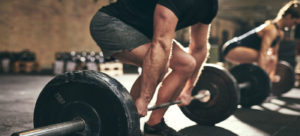
Do full-body workout once or twice a week. Even though you are using weights the primary goal of this full-body workout should be to burn fat that means you want to move quickly between the sets with short breaks around 60 seconds long. On these days you want to start with a weight that you can rep out for a slightly higher rep count around 10 to 12 reps. I want you to choose a total you 8 exercises start with the ones that work your whole body before moving on to the exercise that hit lower and upper body separately. Some examples of weight training workouts are Deadlift, Clean and press, Bench press, Overhead press, and Squats. Workout like this may be difficult but it will help you to breakdown your muscle, Increase lean body mass, deplete glycogen stores and enhance insulin sensitivity while burning tuns of calories. 7. PHA training (Upper and lower body peripheral heart action training)

Peripheral heart action training sounds like something you might do in a doctor's office, but it's actually a form of training developed by Dr. Arthur Steinhaus in the 1940s. The idea behind PHA training is to elevate your metabolism by doing exercises in a certain order so that your blood keeps circulating throughout your body. PHA is basically a type of circuit training that eventually became popular in the 1960s when Mr. Universe, Bob Gajda, started using this kind of training. The idea is that you do five to six exercises, one after the other, with no, rests in between just like a typical circuit training workout. The difference is that you alternate between an upper body exercise and a lower body exercise. That's what keeps the blood circulating during the entire workout. 8. High-Intensity Interval Training
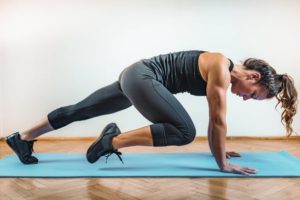
High-intensity interval training is a cardio session arranged as short bursts of very hard work. The whole point of high-intensity training is to kick up the intensity of your cardio. In order to qualify as true high-intensity interval training, you’ll need to push yourself to the max during every set. That’s why they’re short—anywhere from 20 to 90 seconds, typically. It’s the opposite of going for a long run where you ration your energy in order to sustain the activity for longer. High-intensity interval training helps you to boost endurance, increasing metabolism, regulating insulin levels, and losing body fat. Read the full article
1 note
·
View note
Photo

CrazyBulk Gynectrol made with natural ingredients designed for permanent reduction of enlarged male breast tissue.
#ChestWorkouts#CrazyBulk#Gynectrol#ManBoobs#ManMoobs#ChestFatBurner#ChestFat#ManBoobReduction#Culture11#USA
0 notes
Photo
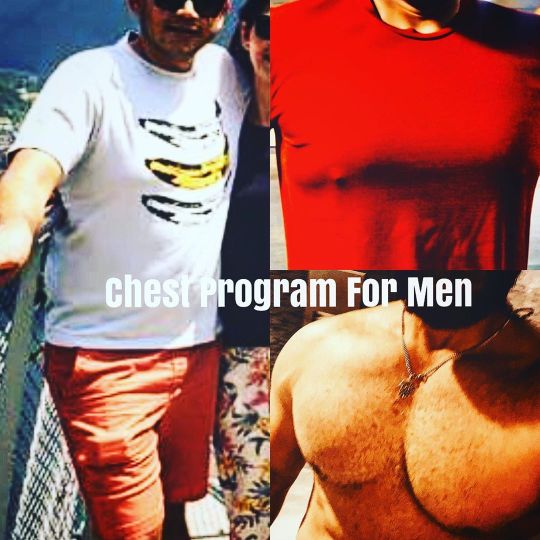
Men over 35/40/45 experience their chest region softening up, storing more fat and eventually it blends with the stomach fat. This is a sign of low testosterone or genetic fat storing regions due to life style or lack of proper guided training. If you are going through these challenges feel free to DM me and I will explain how to resolve this issue. #menover40 #chestfat #chestworkoutformen #chestworkoutsforwomen #chestworkouts #chestday #benchpress #lowtestosterone #thisis40 #menshealthawareness #menshealthmag #fatlossformen #mensfitnessmotivation #personaltrainerjerseycity #testesterone #jerseycityfitness #personaltrainertribeca #sohonyc #nycmarathon #nyc #batteryparkcity #jerseycitystory #menover50 #happymonday😊 #motivation #motivationmonday #dogpoundnyc (at Jersey City, New Jersey) https://www.instagram.com/p/B5kq-sGn69s/?igshid=1li5o78txg2mc
#menover40#chestfat#chestworkoutformen#chestworkoutsforwomen#chestworkouts#chestday#benchpress#lowtestosterone#thisis40#menshealthawareness#menshealthmag#fatlossformen#mensfitnessmotivation#personaltrainerjerseycity#testesterone#jerseycityfitness#personaltrainertribeca#sohonyc#nycmarathon#nyc#batteryparkcity#jerseycitystory#menover50#happymonday😊#motivation#motivationmonday#dogpoundnyc
0 notes
Photo

How to reduce Chest Fat https://youtu.be/pnxUOEMYrTA #fitnesseducation #bodyengineers #workout #chestfat #fatburner #gffifitness #fitness #medical #sports https://www.instagram.com/p/BvmqH_nHOsM/?utm_source=ig_tumblr_share&igshid=u88ox0s8mqme
0 notes
Link
0 notes
Text
How to Remove Chest Fat
Body fat can cause weight gain, lethargy, and medical conditions. Different areas of the body experience it differently. Burning body fat, especially in the chest, requires extra effort and specific exercises. A team of doctors and physical trainers can help effectively deal with it. Chest fat is a concern for both males and females.
What causes chest fat in males?
Chest fat can be caused by various factors such as sarcopenia, hormonal imbalances, obesity, aging, and certain drugs. It can also be due to gynecomastia, which increases the amount of breast gland tissue in males. Underlying and comorbid health issues such as liver or kidney disease, hypogonadism, thyroid dysfunction, lung or testicular cancer, and tumors in the adrenal glands can also contribute to chest fat. Identifying and eliminating the causes of chest fat can prevent potential consequences.
What causes chest fat in females?
Hormonal changes in women can lead to breast growth, which can be caused by various factors such as genetics, an unhealthy lifestyle, PCOS, diabetes, etc. Any unusual lumps or changes in the breasts should be seen by a doctor right away. Factors like pregnancy, breastfeeding, hormonal imbalances during the menstrual cycle, aging, and certain medical conditions can also increase chest fat in women.
Effective Chest Fat Reduction Exercises
Push-ups target chest muscles and reduce fat. Chest dips engage pectoral muscles. Incline bench press targets upper and lower chest muscles with dumbbells or barbells.
Talk to a fitness expert to ensure you're doing these exercises correctly. Doing them in your workout can help you lose fat and make your chest look firmer.
Natural Ways to Burn Fat Under Chest
Besides working out, making some lifestyle changes can also help reduce chest fat and help you lose weight overall. Here are some natural methods to help with this:
Balanced diet: emphasizes the importance of maintaining a balanced diet that incorporates proteins, whole grains, fruits, vegetables, and healthy fats. It's crucial to avoid overconsumption of calories.
Strength training exercises: Incorporating strength training exercises is crucial for building muscle mass. Resistance training enhances overall muscle definition in addition to helping to shape and define the chest muscles.
Regular cardiovascular exercise: Perform aerobic activities to increase your heart rate and burn calories. Running, swimming, or brisk walking are your options. Chest fat can be lost as well as overall body fat with cardiovascular exercise.
Sufficient rest and recovery: Give your body the time it needs to recover properly between workouts. Getting enough restful sleep, managing stress, and avoiding overtraining can help optimize fat loss and overall well-being.
Importance of regular sleep: Sleep is important for everyone, including those looking to get a toned chest. It helps with metabolism, hormones, and health. Try to sleep for at least seven to eight hours without interruptions every night, and you'll see your chest muscles get stronger.
Reducing alcohol consumption: Excessive alcohol consumption can harm hormone levels and increase chest fat, so it's best to reduce it in moderation.
Medical Treatments for Chest Fat Reduction
If changes to your diet, exercise routine, and lifestyle aren't yielding the results you desire, you may consider exploring medical treatments for reducing chest fat. The two primary options are liposuction and gynecomastia surgery.
Liposuction
Liposuction is a surgical procedure designed to remove excess fat from specific areas of the body, including the chest.
It's a popular option for those looking for immediate results. However, it's important to remember that liposuction is a surgical procedure associated with its own set of risks and complications.
Therefore, it's crucial to consult with a qualified professional before proceeding with the surgery.
Gynecomastia Surgery
Gynecomastia surgery is specifically tailored to address enlarged male breasts. It entails the removal of excess breast tissue and reshaping the chest to achieve a more masculine appearance.
Similar to liposuction, it's crucial to consult with an experienced surgeon to carefully consider the risks and benefits.
It's important to remember that medical treatments should always be considered a last resort.
Before opting for surgery, it's advisable to explore non-invasive alternatives and seek professional advice to determine the most appropriate treatment plan for your unique situation.

Newly Discovered ‘Mountain Tea’ awakens metabolism
Wrapping Up
Preventing chest fat requires a balanced diet that supports weight loss and hormonal balance. Protein is essential for muscle growth, while complex carbohydrates offer sustained energy. Healthy fats play a crucial role in hormone regulation. Staying hydrated helps control appetite, and regular exercise enhances fat loss and metabolic activity. Managing stress is key to reducing fat storage related to cortisol. Getting enough sleep is vital for hormone regulation and metabolism. Maintaining consistency in diet and exercise is crucial for sustaining a calorie deficit, promoting muscle growth, and achieving hormonal balance. This comprehensive approach ensures a gradual and sustainable reduction in chest fat, leading to improved health and body composition.
0 notes
Photo

New Post has been published on https://pickstofit.com/complete-chest-workout-lean-body-fat-loss-program-episode-3/
Complete Chest Workout Lean Body Fat Loss Program Episode 3
chestworkout #completechestworkout #fitness #gym #bodybuilding #fitindia #bodytrainingtips #workout #chestfat #losechestfat in this video will tell you today … source
0 notes
Text
What kind of nextlevel em8arrassing would I 8e if I was personally insulted 8ecause some people have chestfat. Are you kidding me.
2 notes
·
View notes
Video
instagram
Showing her how to attack the chest fat and target, contract that particular area using pushups. Muscle contracts or releases. If you can understand how to contract toning will happen and it will show when fat % is dropped. #personaltrainerjerseycity #personaltrainer #howtoachievesuccess #mindset #personaltrainertribeca #fatloss #womenstoning #chestworkout #pushups #chestfat (at Jersey City, New Jersey) https://www.instagram.com/p/BryEE-olwv9/?utm_source=ig_tumblr_share&igshid=1icvb9aj2qyr5
#personaltrainerjerseycity#personaltrainer#howtoachievesuccess#mindset#personaltrainertribeca#fatloss#womenstoning#chestworkout#pushups#chestfat
0 notes
Text
Find out how glutathione can help you get the most out of your gynecomastia reduction.
Learn more bellow.
http://howtostopgynecomastia.com/get-the-most-out-of-your-gynecomastia-reduction/
2 notes
·
View notes
Text
How to reduce chest fat?
To effectively remove chest fat, a combination of dietary changes, exercise, and lifestyle modifications is essential. This guide will explore the strategies that can help both men and women reduce chest fat, focusing on a holistic approach that promotes overall fat loss and muscle toning.
Chest fat can be particularly stubborn and is often influenced by various factors, including genetics, hormonal changes, and overall body fat percentage. In men, excess chest fat may manifest as "man boobs," a condition medically known as gynecomastia, which can be caused by hormonal imbalances, obesity, or certain medications. For women, chest fat can be linked to overall body fat and hormonal fluctuations, particularly during different life stages such as puberty, pregnancy, or menopause.
The Importance of a Caloric Deficit
The fundamental principle of losing fat, including chest fat, is to create a caloric deficit, meaning you burn more calories than you consume. This can be achieved through a combination of dietary adjustments and increased physical activity.
1. Calculate Your Daily Caloric Needs: Start by determining your Basal Metabolic Rate (BMR) and total daily energy expenditure (TDEE). This will help you understand how many calories you need to maintain your current weight and how many you should consume to lose weight.
2. Aim for a Moderate Caloric Deficit: A deficit of 500 to 800 calories per day is generally recommended, which can lead to a safe weight loss of about 1 to 2 pounds per week. This gradual approach is more sustainable and healthier than drastic dieting.
Dietary Changes
Adopting a balanced diet is crucial for fat loss. Here are some dietary strategies to help reduce chest fat:
Prioritise Whole Foods: Focus on whole, unprocessed foods such as fruits, vegetables, lean proteins, and whole grains. These foods are nutrient-dense and can help you feel full while consuming fewer calories.
Limit Sugars and Refined Carbs: Reduce your intake of sugary foods and drinks, as well as refined carbohydrates, which can lead to weight gain and increased fat storage.
Monitor Portion Sizes: Be mindful of portion sizes to avoid overeating. Using smaller plates and serving sizes can help control calorie intake.
Stay Hydrated: Drinking plenty of water can aid in weight loss by promoting satiety and reducing calorie intake.
Exercise Regimen
Incorporating both cardiovascular and strength training exercises is essential for losing chest fat and toning the chest area.
Cardiovascular Exercise
Regular cardio is effective for burning calories and promoting overall fat loss. Aim for at least 150 minutes of moderate-intensity cardio per week, which can include:
- Running or jogging
- Cycling
- Swimming
- High-Intensity Interval Training (HIIT)
- Jump rope or stair climbing
Strength Training
Building muscle in the chest area can help tone the muscles and improve the overall appearance of the chest. Effective exercises include:
Push-ups: A classic exercise that targets the chest, shoulders, and triceps. Variations like wide-grip push-ups can further engage the chest muscles.
Bench Press: Using a barbell or dumbbells, this exercise effectively targets the pectoral muscles.
Chest Fly: Performed with dumbbells, this exercise helps to isolate and strengthen the chest muscles.
Dips: Utilising parallel bars or sturdy chairs, dips can effectively work the chest and triceps.
Sample Weekly Workout Plan
Monday: 30 minutes of running + Push-ups (3 sets of 10-15 reps)
Tuesday: Strength training (Bench press and Chest fly, 3 sets of 10-12 reps each)
Wednesday: 30 minutes of cycling + Dips (3 sets of 8-12 reps)
Thursday: HIIT workout (20-30 minutes)
Friday: Rest or light activity (walking, yoga)
Saturday: 30 minutes of swimming + Strength training (focus on upper body)
Sunday: Rest or light activity
Lifestyle Modifications
In addition to diet and exercise, consider the following lifestyle changes to support fat loss:
Get Enough Sleep: Aim for 7-9 hours of quality sleep per night, as inadequate sleep can disrupt hormones related to hunger and fat storage.
Manage Stress: High stress levels can lead to weight gain, particularly in the abdominal and chest areas. Incorporate stress-reducing activities such as meditation, yoga, or deep-breathing exercises.
Track Your Progress: Keeping a food journal or using a fitness app can help you stay accountable and monitor your caloric intake and exercise routines.
Medical Considerations
If you find that diet and exercise are not yielding the desired results, or if you suspect that hormonal imbalances are contributing to chest fat, consult a healthcare professional. They can provide guidance tailored to your specific situation, including potential medical interventions if necessary.

Newly Discovered ‘Mountain Tea’ melts 1lb daily
Conclusion
Removing chest fat requires a multifaceted approach that combines a caloric deficit, healthy eating, regular exercise, and lifestyle modifications. By understanding the factors contributing to chest fat and implementing these strategies, you can achieve a healthier body composition and improve your overall well-being. Patience and consistency are key, as sustainable fat loss takes time and dedication.
0 notes
Link
India’s most trusted plastic Surgery Center क्या आपको Chest Fat है? क्या Gynecomastia है? वीडियो देखें और जानें
✅ Single Day Procedure✅ 17+ Years of Experience✅ 10000+ Satisfied Patients✅ Award-winning Plastic Surgeons✅ 100% assured results✅ Complimentary Personalized Follow up until one year✅ Economical Pricing✅ EMI Facility Available✅ Centers in Delhi, Gurgaon
----------------------------------------------------
For further queries, ☎️ call us at +91-9811994417
or drop us an email at 📩 [email protected] know about Gynecomastia procedure visit https://www.divinecosmeticsurgery.com
#Gynecomastia #GynecomastiaSurgery #Gynecomastiatreatment #Manboobs #Manboobsproblem #Chestfat #Gland #GynecomastiakoIgnore #GynecomastiaTestimonial#BollywoodPlasticSurgeon #CelebrityPlasticSurgeon #RealSelfBestplasticSurgeon #PlasticsurgeryinDelhi #CosmeticsurgeoninDelhi #Plasticsurgery #DrAmitGupta #DivineCosmeticSurgery
𝐃𝐢𝐬𝐜𝐥𝐚𝐢𝐦𝐞𝐫:Please keep in mind, results may vary from patient to patient. Photographs may be filtered or modified. So, be realistic.In addition, we never criticize the patient's natural beauty. Everyone is beautiful. This content is only created for all those patients who are looking to enhance their beauty more.We are not responsible for any harm if anyone misguides you from our name. Our all-social media official handles are linked up on our website. Every treatment here is performed with a well-experienced Plastic and Cosmetic Surgeon.
0 notes